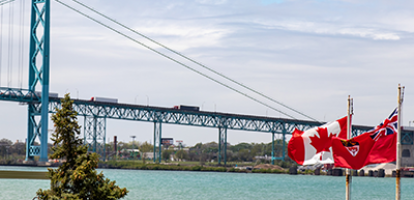From: Daniel Schwanen, Rosalie Wyonch and Benjamin Dachis
To: Ontario voters
Date: May 15, 2018
Re: Ahead of the Curve: The Big Picture Issues for the Ontario Election
The Ontario election campaign has barely three more weeks to run, and so far, some of the largest issues facing the province have been conspicuous by their absence in the duelling rhetoric.
The C.D. Howe Institute has tackled many Ontario public policy issues over the past year, and today we revisit three analyses on how to improve Ontario’s economic strength and competitiveness.
First up, the pre-budget analysis, An Economic Program for Ontario, in which Ben Dachis provided a roadmap for Ontario’s fiscal priorities in 2018/2019 and beyond.
The government must act to bring the long-term cost of government in line with the revenue-raising capacity of the province and our economic program shows a number of policy directions in areas as diverse as healthcare, labour and education policy, tax reform, housing and municipal policy, as well as electricity and greenhouse gas policy, that can balance increases in spending with the generation of new revenues and cost-savings measures.
The medium- and long-term fiscal outlook for Ontario is dire. The government should restate the province’s books to reflect the Auditor General’s accounting treatment of pension assets and electricity-sector debt. Further, it should adopt a sound long-term fiscal policy – which requires surpluses, not just balanced budgets. In healthcare, which already consumes roughly half of the province’s own-source revenues, policymakers will face continued cost pressure. We view progress in addressing this issue as a critical challenge.
As well, we recommend:
- Lowering high provincial business property taxes to create a level playing field across the province.
- Better recognizing the cost of raising children in the provincial personal income tax.
- Reducing high personal tax rates across the income scale.
Innovation is a critical driver of economic growth for any advanced economy. In their Innovation Report Card for Canada, Daniel Schwanen and Rosalie Wyonch assessed the current state and offered policy recommendations for Ontario and all Canadian governments.
They find innovation outcomes are driven by these policy interactions:
- Human capital, Excellence and Attractiveness to Knowledge Workers;
- Access to Markets and Competition Regime;
- Efficiency and Transparency in Public Sector and Regulated Infrastructure;
- Fiscal Regime;
- Regulatory Environment;
- Intellectual Property Rules;
- Policies Promoting Social Acceptance of Innovation;
- Government Direct and Indirect Support for Innovation.
Finally, automation. In Rise of the Robots – Which Provinces are Ready? Rosalie Wyonch assessed preparedness for the coming wave of technological change in the workplace.
Throughout history, technological change has helped lift people out of poverty, raised standards of living and improved well-being. However, it can also be disruptive, rendering specific occupations and skills obsolete, unsettling economic structures and contributing to unemployment and economic uncertainty.
To help provinces mitigate the impacts of technological change, there is room for public policy to moderate the effect of technological change on the labour market, primarily in two different ways.
- All governments should continue to adapt existing policies that support workers displaced by technology.
- Provinces at higher risk of labour market disruption should take a broader and longer term approach when developing policy to tackle the challenges associated with technological change. Innovation policy is more likely to be successful if it integrates considerations for talent and knowledge, entrepreneurship and business growth, innovation in government, and clarity of purpose for government support.
To send a comment or leave feedback, email us at blog@cdhowe.org.
The views expressed here are those of the authors. The C.D. Howe Institute does not take corporate positions on policy matters.





